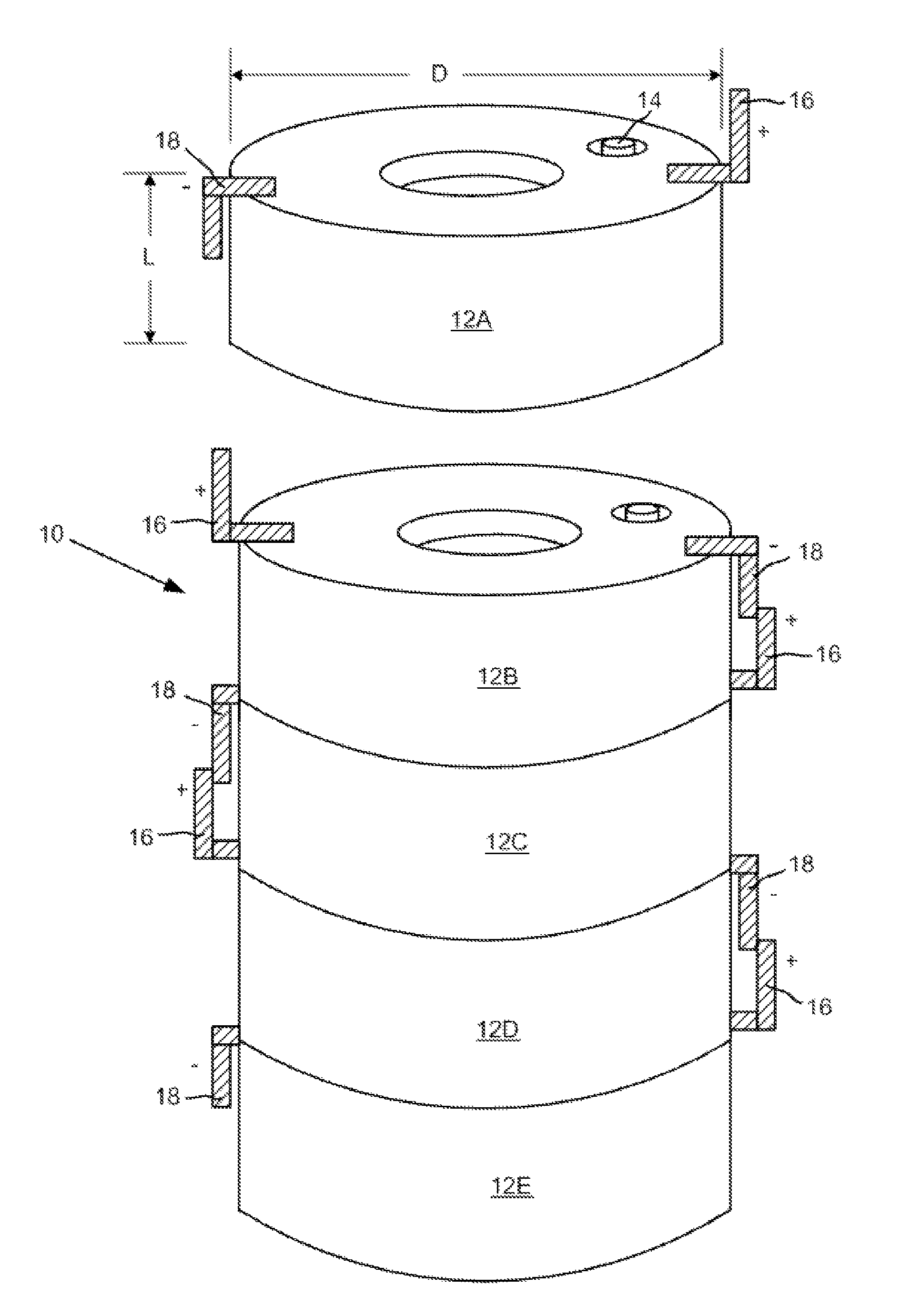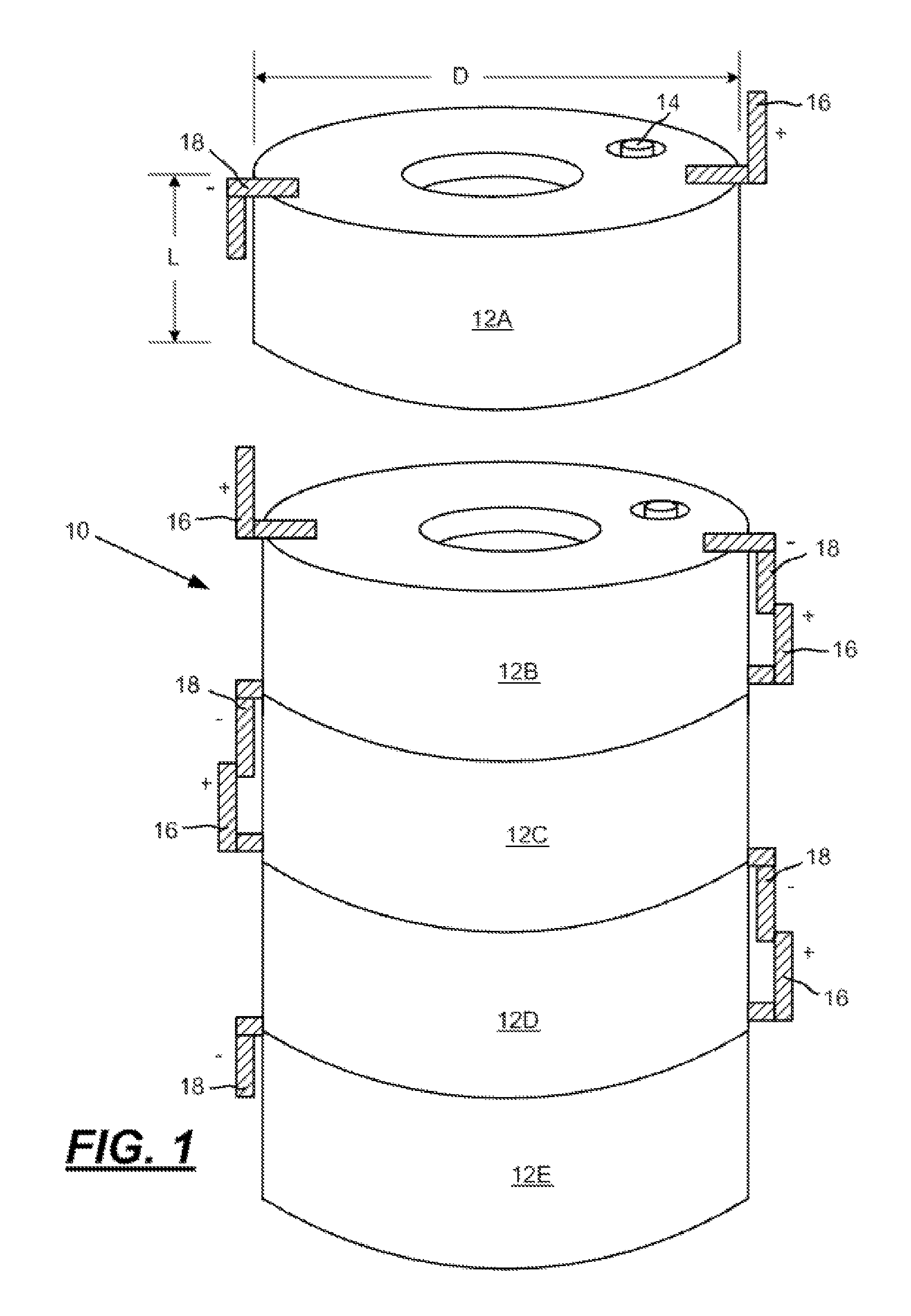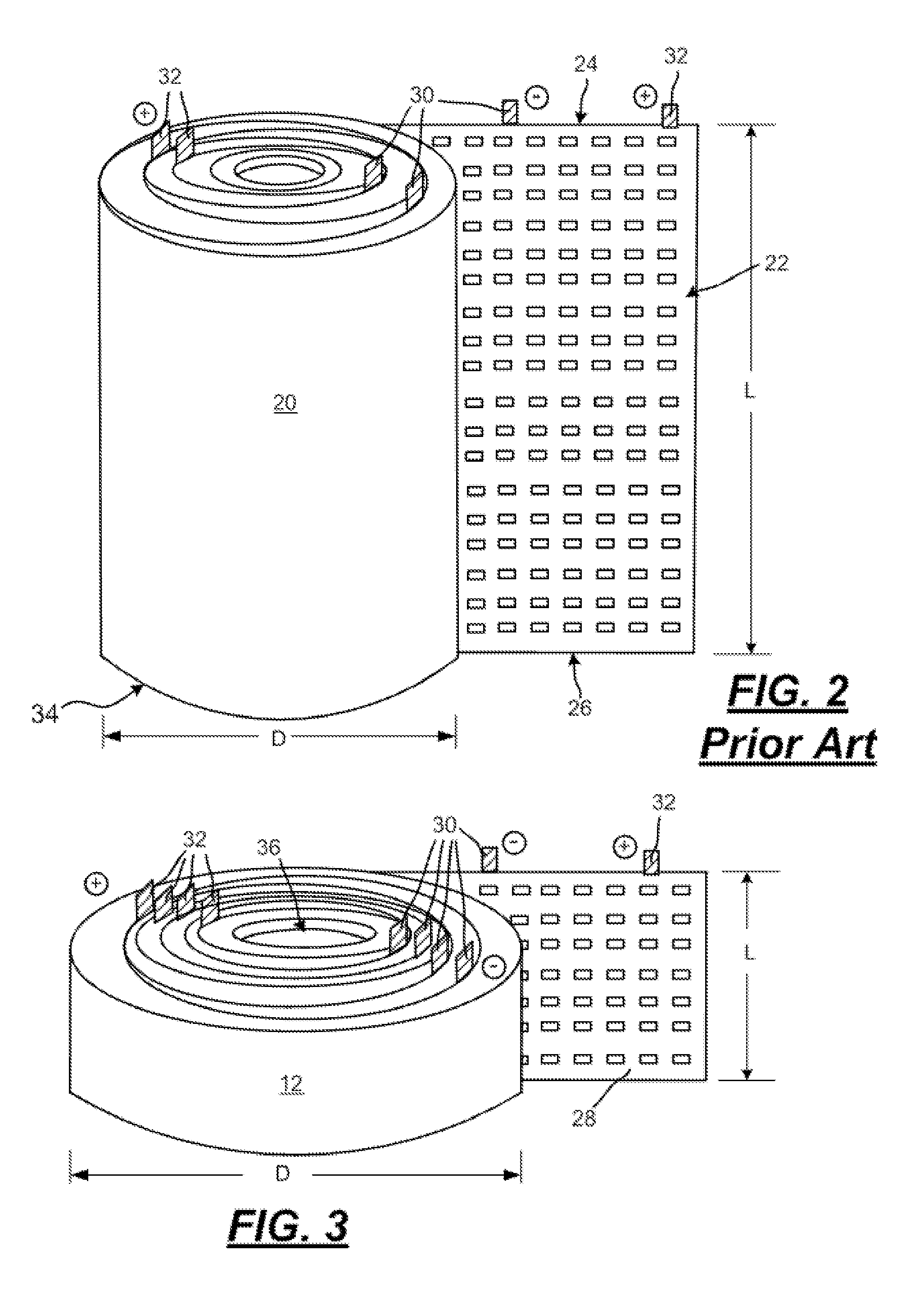Low aspect ratio spiral-wound VRLA battery
a low aspect ratio, lead acid technology, applied in the field of automotive batteries, can solve the problems of limiting the ability to stack high aspect ratio cells, occupying less space, and requiring multiple vrla cells to obtain batteries with the desired voltag
- Summary
- Abstract
- Description
- Claims
- Application Information
AI Technical Summary
Benefits of technology
Problems solved by technology
Method used
Image
Examples
example 1
[0043]A low aspect ratio spiral-wound VRLA battery is constructed by first preparing positive grids cast from a conventional lead-tin-calcium alloy and negative grid plates cast from a lead-calcium alloy. In this example both grid plates have a width of 2.54 cm and a length of 100 cm thus having a geometric area of approximately 254 cm2 per side. The positive grid has a thickness of 1.2 mm while the negative grid is 1.0 mm thick. The positive plate is pasted to a thickness of 1.4 mm using a conventional litharge based oxide containing 24 wt. % red lead. The negative grid is pasted with a conventional leady oxide paste to a thickness of 1.2 mm using a paste mix that includes a conventional negative expander mixture and state of the art graphite (2 wt. %) and activated carbon (2 wt. %) additives for improved high rate partial state of charge cycling. Immediately after pasting the positive and negative “plates,” the plates are wound around a 4 mm mandrel while interleaving the plates w...
example 2
[0045]A low aspect ratio spiral-wound VRLA battery with a central core for cooling is constructed by first preparing both positive and negative grids cast from a lead-tin-calcium alloy. In this example both grids have a width of 2.54 cm and a length of 153 cm thus having a geometric area of approximately 390 cm2 per side. The positive grid has a thickness of 1.2 mm while the negative grid is 1.0 mm thick. The positive plate is pasted to a thickness of 1.4 mm using a conventional litharge based oxide containing 24 wt. % red lead. The negative grid is pasted to a thickness of 1.2 mm using a conventional leady oxide / expander paste mix without the graphite and activated carbon additives used in Example 1. Immediately after pasting the positive and negative “plates,” the plates are wound around a 25.4 mm mandrel while interleaving the plates with an absorbent glass matte battery separator (1.3 mm thick) and a sheet (0.5 cm×153 cm) of carbon paper (0.005 mm thick). The finished low aspect...
PUM
| Property | Measurement | Unit |
|---|---|---|
| aspect ratio | aaaaa | aaaaa |
| aspect ratio | aaaaa | aaaaa |
| aspect ratio | aaaaa | aaaaa |
Abstract
Description
Claims
Application Information
 Login to View More
Login to View More - R&D
- Intellectual Property
- Life Sciences
- Materials
- Tech Scout
- Unparalleled Data Quality
- Higher Quality Content
- 60% Fewer Hallucinations
Browse by: Latest US Patents, China's latest patents, Technical Efficacy Thesaurus, Application Domain, Technology Topic, Popular Technical Reports.
© 2025 PatSnap. All rights reserved.Legal|Privacy policy|Modern Slavery Act Transparency Statement|Sitemap|About US| Contact US: help@patsnap.com



